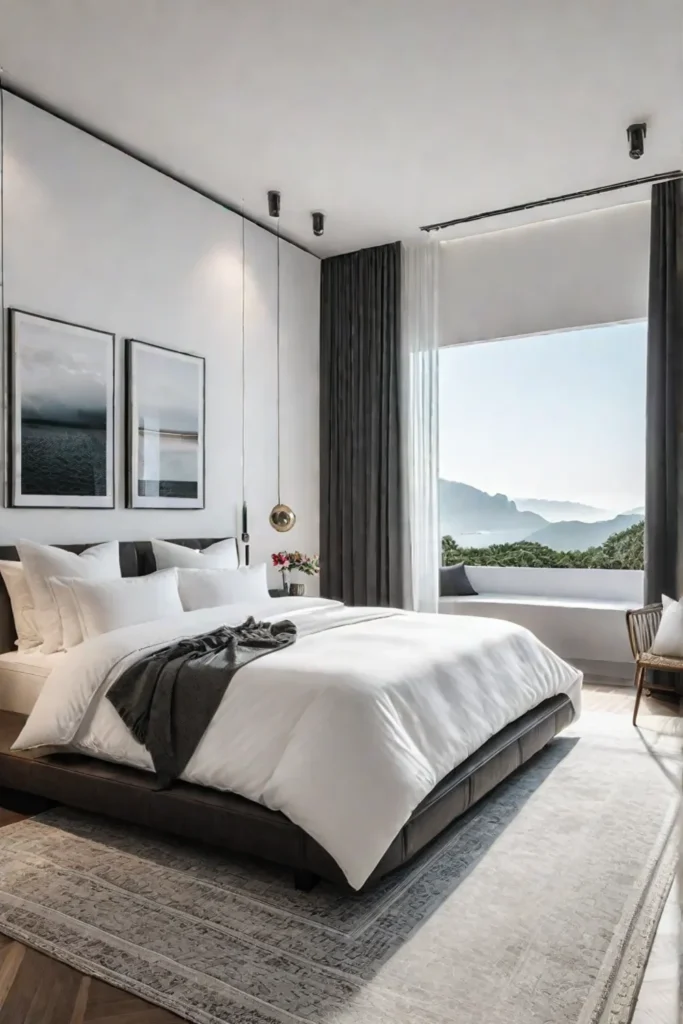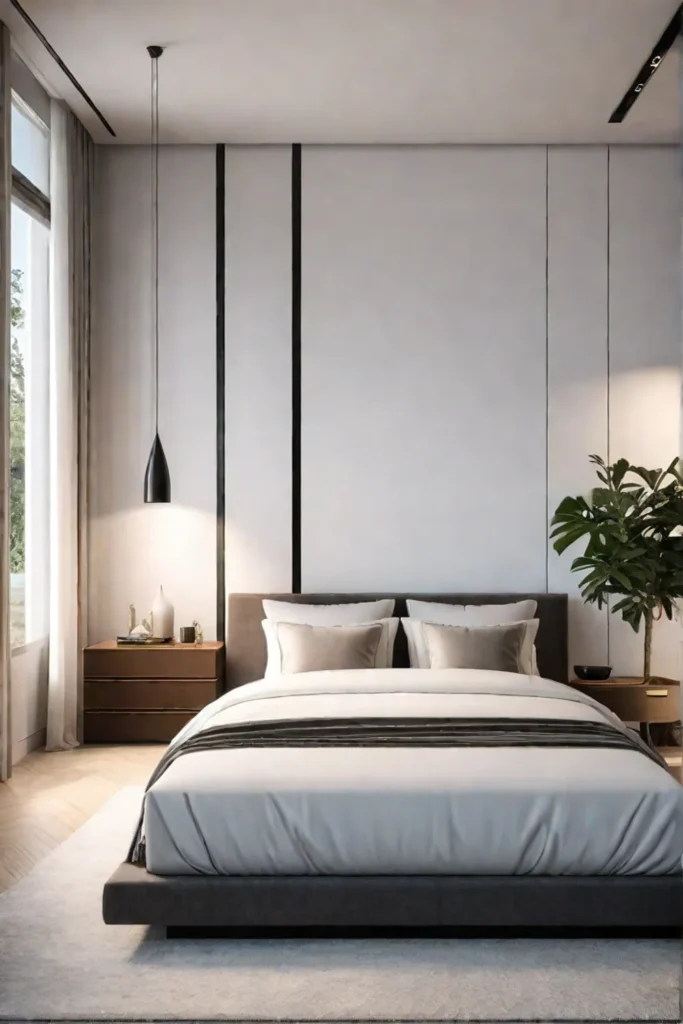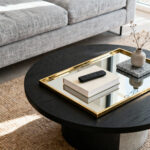Do you ever feel overwhelmed by the clutter in your bedroom? Maybe you’ve tried rearranging your furniture or adding more storage, but the space still feels chaotic and uninviting. If this sounds familiar, it might be time to explore the world of minimalist bedroom decor.
Minimalism isn’t just a design trend – it’s a lifestyle choice that can profoundly impact your well-being. By paring down your belongings and focusing on simplicity, you can create a serene and rejuvenating sleep sanctuary that promotes relaxation and better sleep quality.

In this beginner’s guide, we’ll dive into the core principles of minimalist bedroom design, offering practical tips and real-life examples to help you transform your cluttered space into a calming oasis. Get ready to say goodbye to visual chaos and hello to a bedroom that truly reflects your sense of calm and intentionality.
Understanding Minimalist Bedroom Design
At its heart, minimalist bedroom design is about simplicity, functionality, and intentionality. It’s about embracing a clean, uncluttered look by focusing on the essentials and eliminating anything unnecessary.
The key principles of minimalism include:
Simplicity: Keeping things simple by focusing on the bare necessities without any unnecessary additions.
Functionality: Every item in the room should serve a clear purpose and contribute positively to its overall aesthetic and functionality.
Intentionality: Each element in the bedroom should be there with a specific intention, adding value rather than just taking up space.

Adhering to these principles can help you create a serene, focused, and rejuvenating bedroom. Studies have shown that a decluttered, minimalist environment can increase feelings of calmness and reduce stress levels.
Furniture and Decor Selection
Selecting the right furniture and decor is crucial in achieving a minimalist bedroom aesthetic. The goal is to prioritize multi-functional pieces that are visually simple and serve a clear purpose.
Multi-Functional Furniture
One of the hallmarks of minimalist design is the use of multi-functional furniture. For example, a platform bed with built-in storage can provide ample sleeping space and additional storage without wasting valuable floor space. Low-profile bed frames are another great option, as they maximize the sense of openness in the room.
Clean Lines and Minimal Ornamentation
Regarding decor, look for pieces with clean lines and minimal ornamentation. Avoid intricate patterns or excessive embellishments, as these can detract from the overall minimalist vibe. Instead, opt for geometric shapes, solid colors, and smooth surfaces to create a cohesive and visually calming environment.

Incorporating Natural Materials
Natural materials like wood, linen, or wool can bring warmth and texture to your minimalist bedroom without compromising aesthetics. These organic elements help balance the clean lines and neutral colors often associated with minimalism. Consider a wooden nightstand, a linen duvet cover, or a wool area rug to infuse your space with a cozy, earthy feel.
Lighting and Textiles
Lighting and textiles are crucial in creating a cohesive, minimalist bedroom environment. By carefully selecting these elements, you can enhance your space’s sense of serenity and visual simplicity.
Maximizing Natural Light
Minimalist design places a high value on natural light, as it helps to create a sense of openness and connection to the outdoors. Incorporate sheer, lightweight curtains or blinds to allow the natural flow of light while maintaining privacy. Positioning mirrors opposite windows can also help to reflect and amplify the natural light throughout the room.

Simple, Geometric Lighting Fixtures
When it comes to artificial lighting, look for simple, geometric fixtures with clean lines and minimal ornamentation. These designs will complement the minimalist aesthetic without adding unnecessary visual clutter. Consider a sleek pendant light or matching table lamps to provide both task and ambient lighting.
Neutral Textiles
Choose bedding, window treatments, and other textiles in neutral, solid colors or subtle patterns to maintain a cohesive minimalist look. Avoid bold, busy patterns, as they can disrupt the calming atmosphere you’re trying to create. Opt for crisp white sheets, a gray duvet cover, or sheer curtains in an earthy tone.
Storage and Organization
Effective storage and organization are essential for a minimalist bedroom. Maximizing hidden storage and using multi-purpose furniture can reduce visual clutter and maintain a clean, uncluttered appearance.

Maximizing Hidden Storage
Incorporate built-in wardrobes, closet organizers, or storage ottomans to neatly store clothing, linens, and other belongings without taking up valuable floor space. These hidden storage solutions help to keep your bedroom free of visual distractions, allowing the clean lines and simple decor to shine.
Decluttering and Organization Systems
Develop a decluttering and organization system to maintain your minimalist aesthetic. The “one in, one out” rule, where an existing item must be removed for every new item brought into the bedroom, can be a helpful guideline. Additionally, the popular “KonMari” method, which encourages only keeping items that “spark joy,” can be a valuable framework for minimizing your belongings.

Personalization and Finishing Touches
While minimalism emphasizes simplicity, there are ways to incorporate personal touches and finishing details that enhance the overall aesthetic without compromising the minimalist principles.
Artwork and Decor
Carefully selected artwork, photographs, or small decorative items can add visual interest and personality to your minimalist bedroom. Choose pieces that hold sentimental value or reflect your unique style, but be mindful of not overcrowding the space.
Textural Elements
Incorporate natural materials like wood, linen, or wool to add warmth and visual interest to your minimalist bedroom. These textural elements help to balance the clean lines and neutral colors, creating a cozy and inviting atmosphere.

Balancing Minimalism and Personal Expression
When personalizing your minimalist bedroom, strive to balance minimalism and self-expression. The Japanese design concept of “Shibui,” which emphasizes the beauty of understated elegance and simplicity, can be a helpful guide. By focusing on quality over quantity and choosing items that evoke positive emotions, you can create a space that feels uniquely yours while still adhering to minimalist principles.
Conclusion
Embracing minimalist bedroom decor is a transformative journey that can lead to a more serene, focused, and rejuvenating sleep sanctuary. By prioritizing simplicity, functionality, and intentionality, you can create a space that promotes relaxation, reduces stress, and reflects your style.

Remember, the path to a minimalist bedroom is not about perfection but finding the right balance between form and function. Start by decluttering, selecting multi-functional furniture, and incorporating natural elements. Over time, refine and personalize your space, always keeping the core principles of minimalism in mind.
So, what are you waiting for? Take the first step towards a minimalist bedroom oasis, and simplify your sanctuary today!










